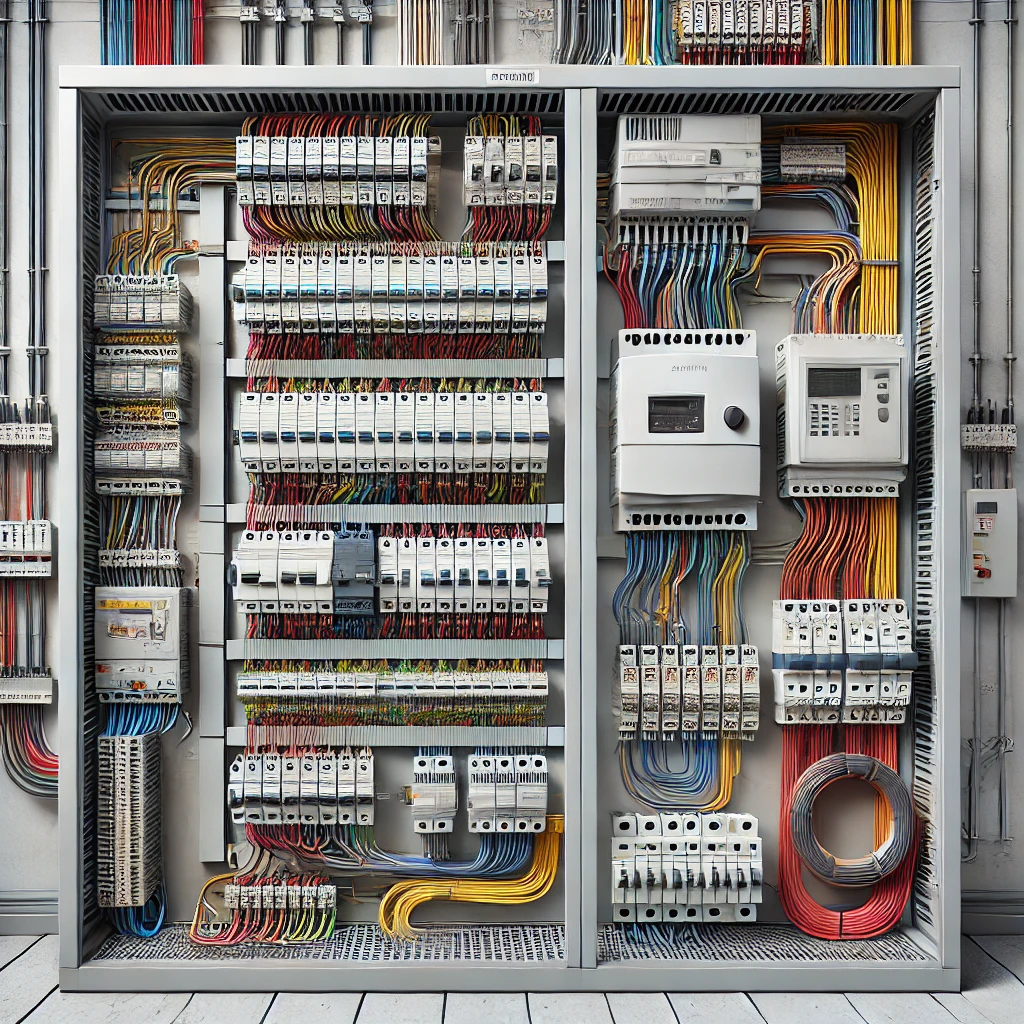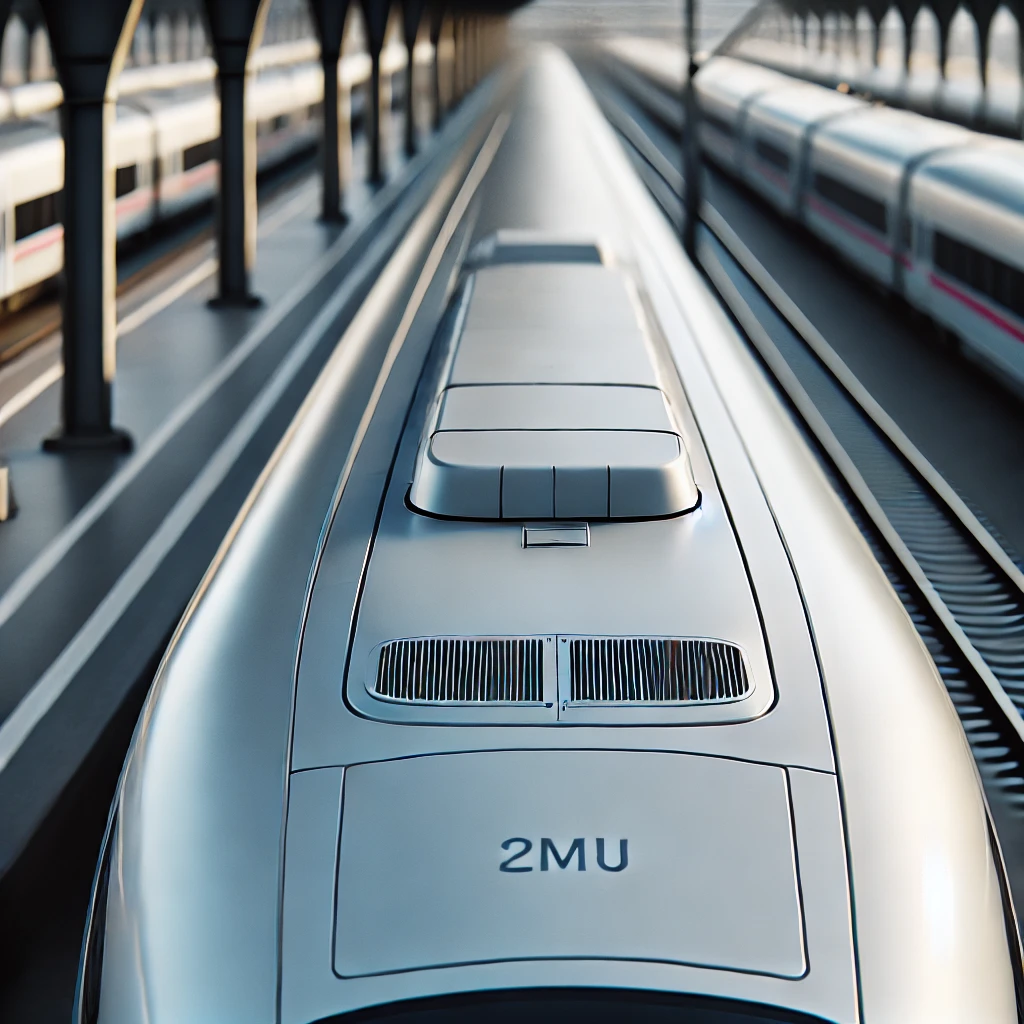Designing electrical installations and cable harnesses for machinery goes beyond merely planning cable routes. Each stage must be meticulously considered—from selecting the appropriate wire gauge to arranging them in cable trays, ensuring safety and reliability. It’s crucial to choose wires not just based on maximum current load but also considering environmental conditions like temperature, humidity, and space availability.
Table of Contents
Design of Electrical Installations: Wire Selection and Cable Routing
In the design of electrical installations and cable harnesses for machinery, wire selection involves more than just current load capacity. Incorrect wire gauge can lead to overheating and system damage, potentially causing machinery or industrial automation failures. Wires must be suited to the current they carry, the length of the route, and environmental conditions. Longer wires increase the risk of voltage drops, negatively impacting machine performance. Therefore, considering all these factors during the design phase is vital.
Additionally, cable arrangement in trays requires careful planning. Overcrowding cables in a single route restricts airflow, leading to overheating. It’s also important to separate low-voltage signal cables from high-voltage ones to prevent electromagnetic interference. Neglecting these aspects can disrupt sensor or PLC controller operations, leading to costly downtimes.
Ultimately, attention to detail in design reduces failure risks and enhances machinery reliability.
Design of Electrical Installations: Equipment Layout in Electrical Cabinets
The design of electrical installations is a critical phase in machinery and production line design, particularly concerning machine safety and harmonized standards. Equipment layout in electrical cabinets must be meticulously planned to ensure system functionality and longevity. Standards like EN 60204-1 specify electrical safety requirements, including the need for appropriate separation of sensitive devices like PLCs from heat-generating components such as inverters. Proper separation minimizes electromagnetic interference and thermal overload, essential for system reliability.
Moreover, according to EN 61439-1, adequate ventilation and spacing between devices are crucial to avoid overheating. Installing inverters in separate cabinets or ensuring sufficient cooling is standard practice, reducing failure risks and operational disruptions. This separation ensures sensitive devices remain unaffected by excessive heat or electromagnetic interference, significantly enhancing system reliability.
Well-organized cabinet space not only ensures safety but also extends machinery lifespan and stability.
Design of Electrical Installations: Grounding and Interference Minimization
Every electrical installation in machinery must have robust grounding. This is not just about meeting standards but ensuring safe and stable operation. Poor grounding design can cause device malfunctions and unforeseen failures. The goal is to provide a safe path for fault currents, preventing them from circulating within the system and causing damage.
Protection against electromagnetic interference is equally crucial. Even minor oversights can cause low-voltage signals to pick up noise from high-current wires, leading to sensor or controller errors. Thus, maintaining separation is vital—wires must be routed separately in well-planned cable routes. Otherwise, even the best systems can fail at critical moments.
Measurement and Monitoring of Installation Parameters
Once an electrical installation in machinery is complete, one of the most important stages is measurement and monitoring of parameters. This phase reveals any design or execution shortcomings, and regular monitoring helps prevent unforeseen failures.

During measurements, it’s crucial to check if all wires meet current load requirements, if there are excessive voltage drops, and if the installation is properly grounded. Tests for electromagnetic compatibility (EMC) are also essential, especially in environments with high interference levels.
Monitoring parameters during machine operation, such as wire temperature measurements or current load analysis, allows early problem detection and escalation prevention. This enables quick responses to changing working conditions, avoiding costly downtimes.
Design of Cable Harnesses in Automotive and Railway Industries
In the automotive and railway industries, as well as aviation, cable harnesses play a crucial role in ensuring reliable and safe electrical system operation. Designing these harnesses involves more than selecting appropriate wires; it requires precise planning of their layout, reserves, and ensuring proper bending radii—both static and dynamic. Specialized CAD tools are invaluable in these projects, allowing simulation of wire behavior under various conditions and control over aspects like cable slack and grommet selection.
In dynamic systems like vehicles, considering movement and vibration is essential, necessitating harness designs that withstand thousands of cycles without damage risk. CAD tools enable precise bending radius checks, preventing excessive cable stress that could lead to failures.

Proper harness layout is also crucial regarding environmental conditions. In vehicles exposed to water, moisture, or dust, it’s essential to prevent water ingress into junction boxes or grommets. Poor harness placement can lead to electrical failures and, in extreme cases, costly downtimes.
